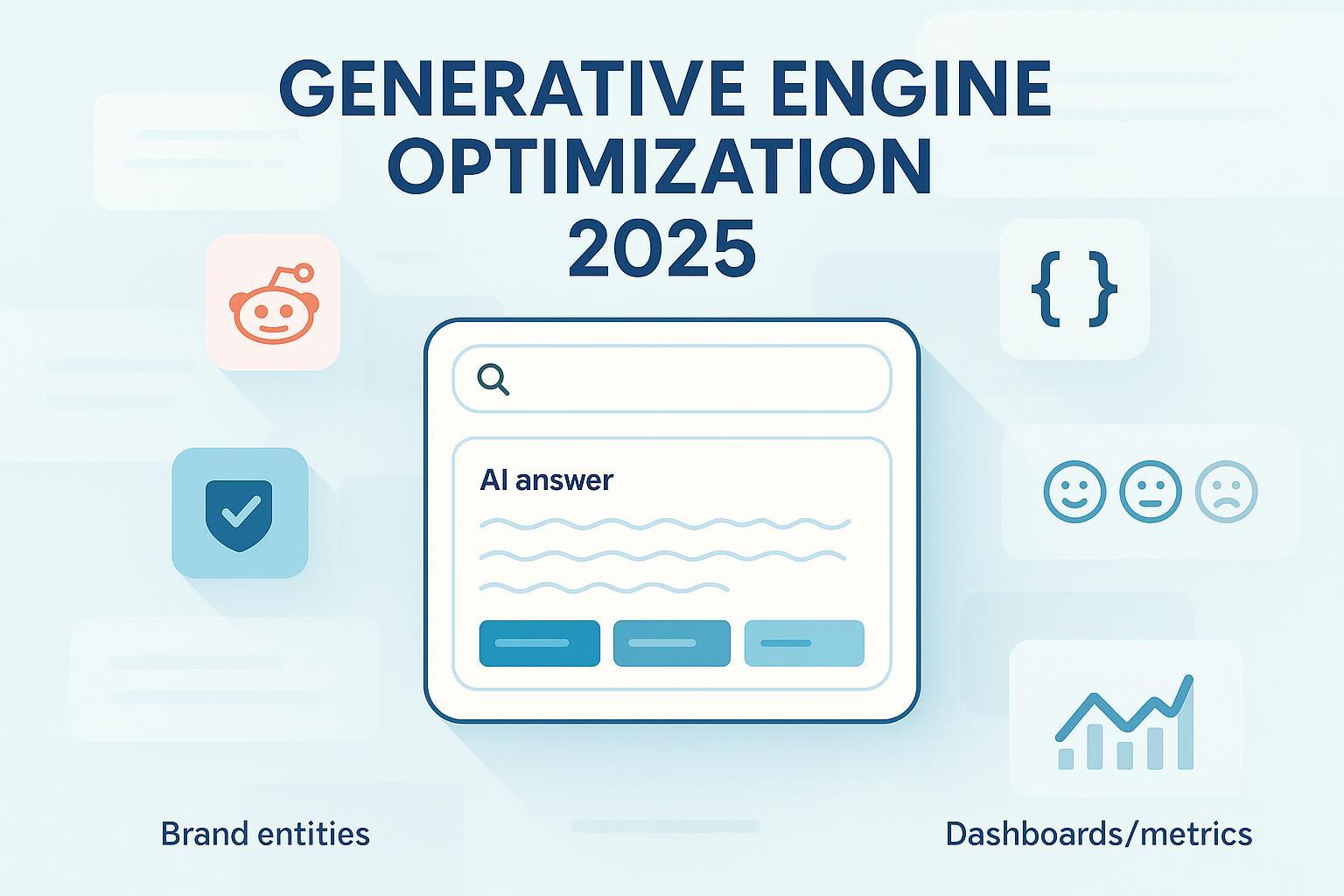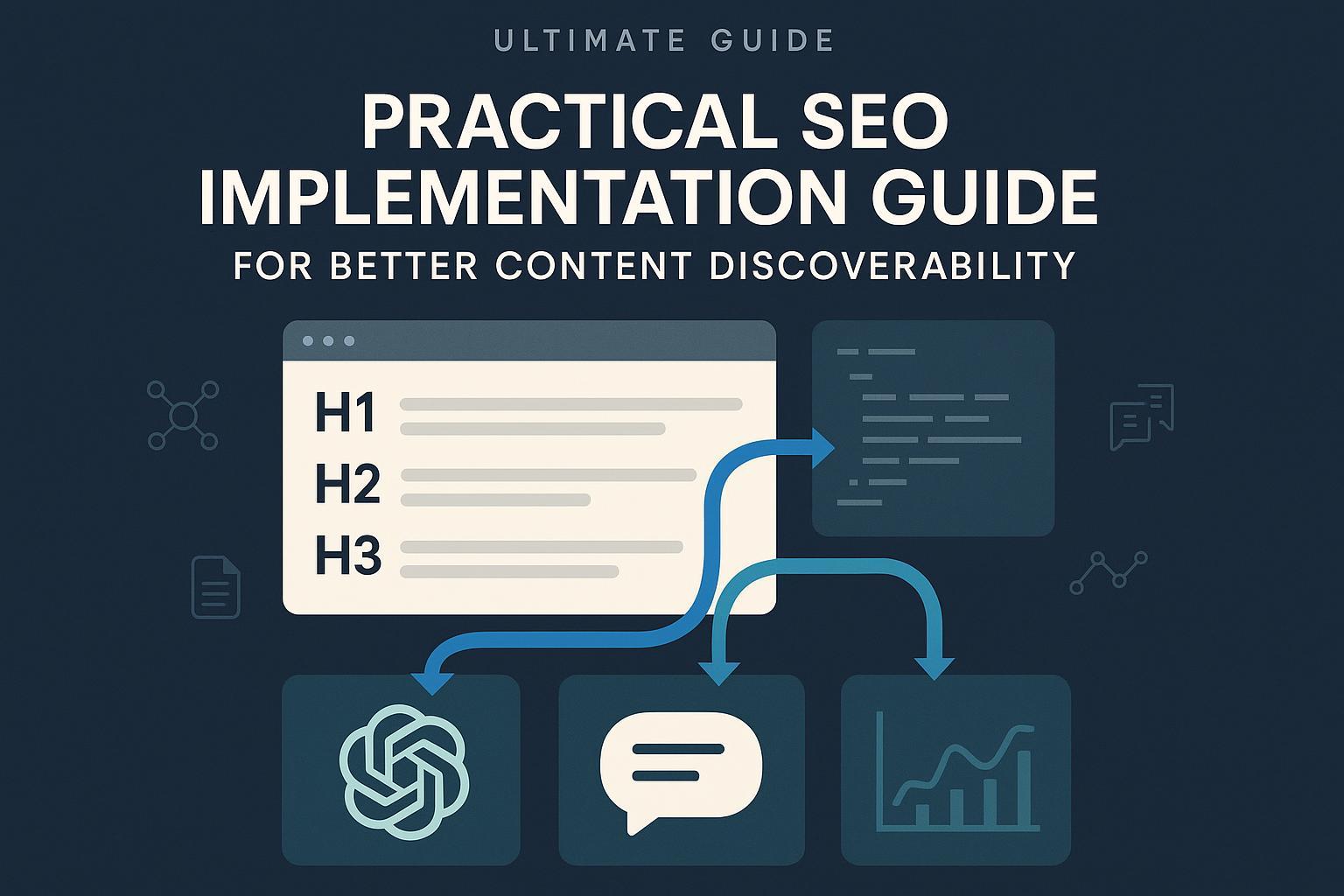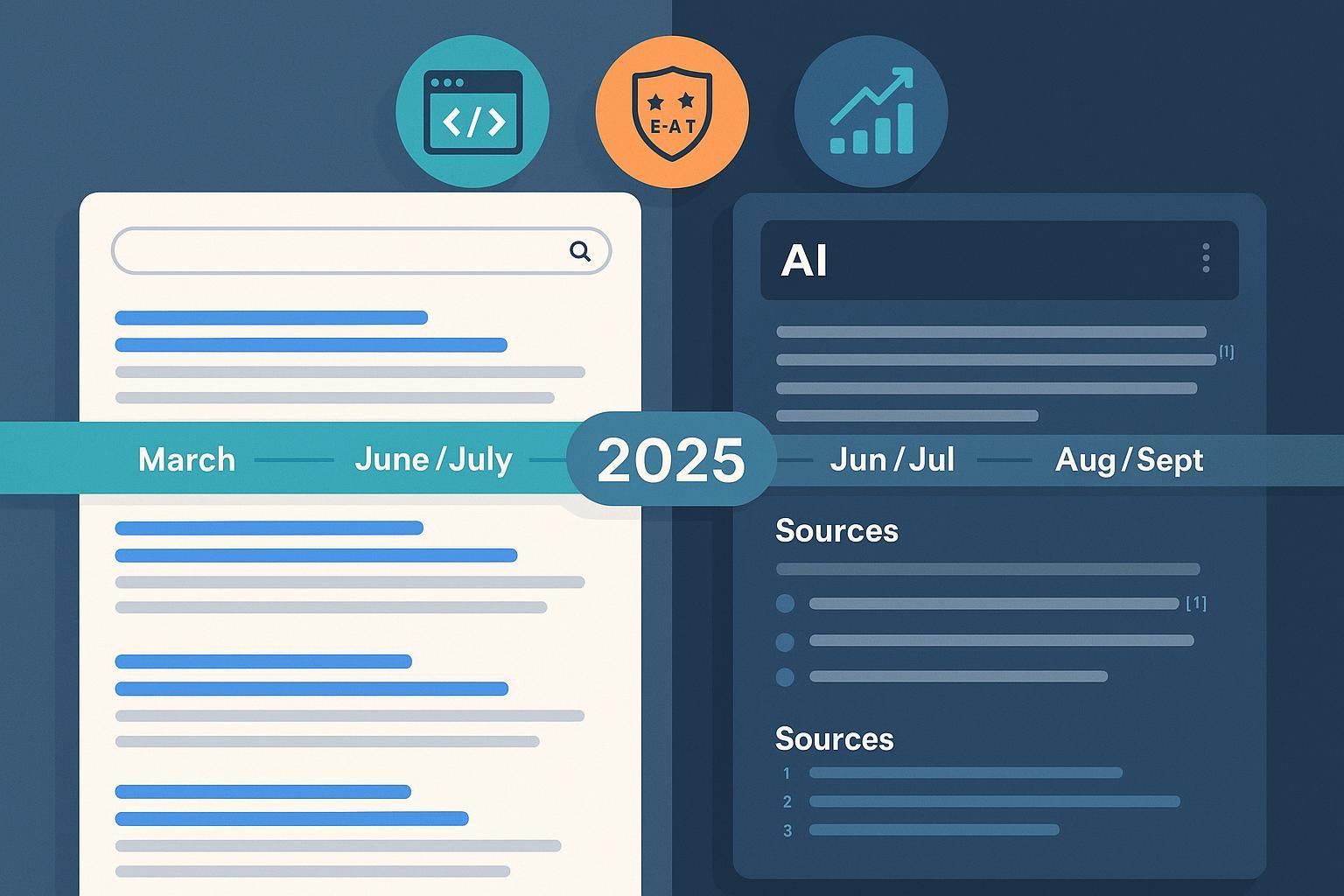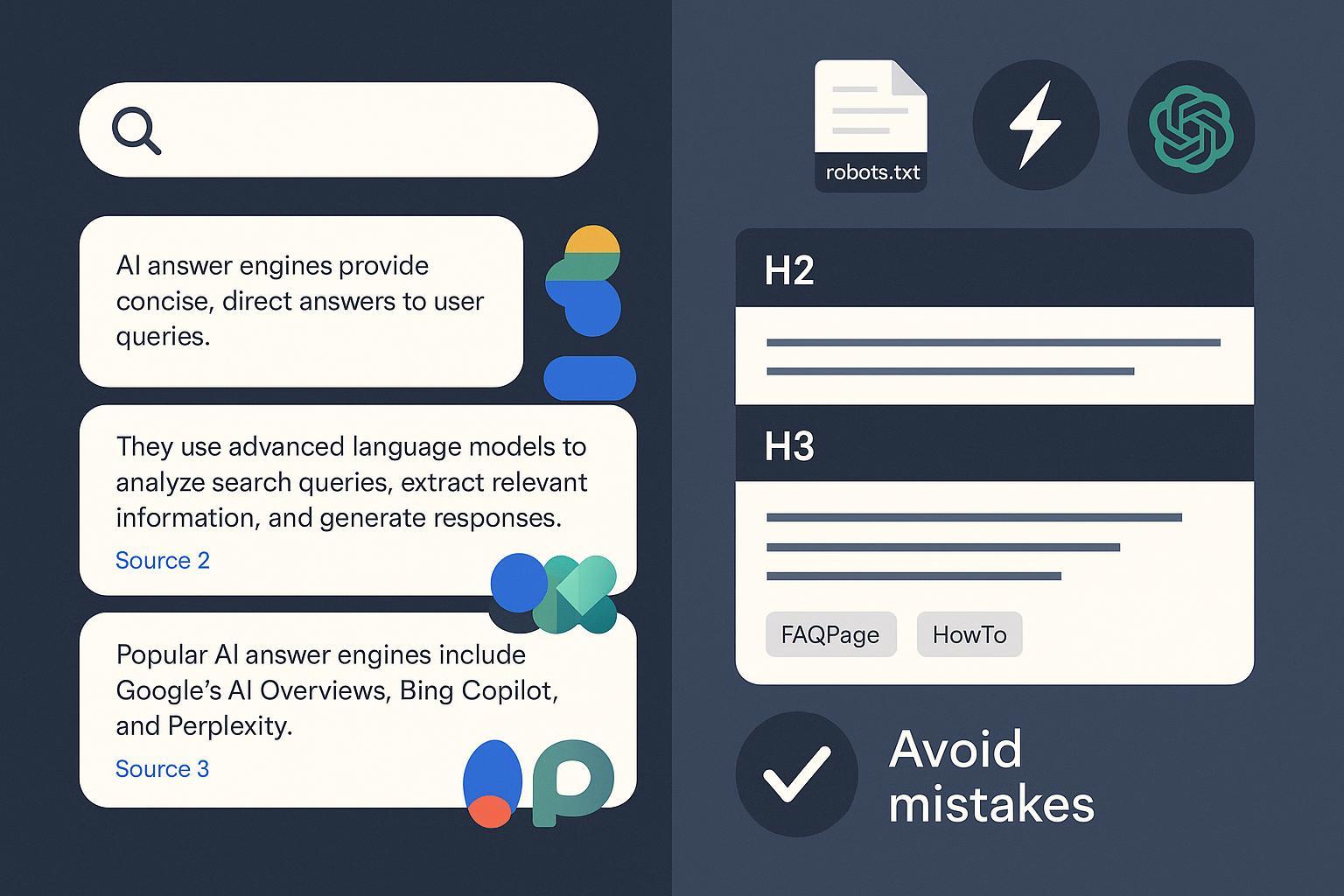5 GEO Opportunities Marketers Are Missing in 2025 (and How to Leverage Them)
Discover 5 overlooked GEO opportunities for marketers in 2025. Learn how to boost AI search visibility with actionable playbooks, KPIs, & next steps.


Generative Engine Optimization (GEO) is the discipline of earning visibility, citations, and accurate narratives inside AI-generated answers across engines like Google AI Overviews/Gemini, ChatGPT/Copilot, Perplexity, and Claude. In 2025, brand discovery is increasingly intermediated by AI—so presence inside answers matters as much as traditional rankings. For a clear primer, see the definition from Search Engine Land (2024), which frames GEO as optimizing for AI-driven search results, not just the classic ten blue links: Search Engine Land on what GEO is (2024). For fresh tactics, Backlinko’s 2025 deep-dive outlines how answer-first content and authority cues drive inclusion: Backlinko’s 2025 GEO guide.
Below are five underleveraged opportunities—with step-by-step playbooks, quick tests, KPIs, and guardrails—to help your brand win GEO in 2025.
1) Earn community-driven citations (without getting banned)
Why this is missed: AI engines frequently ground nuanced, experience-based queries in community UGC (think Reddit and specialist forums). Yet many brands shy away from engaging because of moderation rules and fear of backlash.
How to leverage
- Map 20–50 “answerable moments” where communities dominate the discussion (e.g., pain points, product comparisons, local nuances). Prioritize active, well-moderated subreddits/vertical forums.
- Write entity-rich, source-backed replies: a clear 60–80-word answer up top, then details, with links to credible third-party evidence. Disclose affiliation per community rules.
- Repurpose your contribution as a canonical FAQ on your site to create a brand-controlled source you can keep updated.
- Track which threads get cited in AI answers and iterate on the topic cluster.
30-minute test
- Pick three recurring questions in your category and contribute one high-value answer each in relevant communities, then republish as a concise FAQ on your domain.
KPIs to watch
- Citation presence by engine for your target query set (% of answers citing your domain or your UGC reply).
- Share of brand mentions vs. competitors in AI answers for those queries.
- Link presence rate (where engines expose clickable sources).
Pitfalls
- Astroturfing or undisclosed self-promo leads to bans and negative sentiment.
- Over-indexing on Reddit while engines continue to weight brand-controlled sources. A 2025 macro study indicates that 86% of AI citations overall are brand-controlled; balance UGC with authoritative owned pages: Search Engine Land’s 2025 analysis of AI citation sources.
Helpful internal deep-dive
- For ethical tactics and measurement ideas, see this community playbook: Reddit-to-AI citation best practices.
Context note
- Engine patterns shift. One 2025 review observed heavier Reddit usage in some engines and time windows; methodology and periods matter. Example coverage: SERoundtable’s 2025 snapshot of source patterns.
2) Steer sentiment inside AI answers (don’t let outdated narratives linger)
Why this is missed: Teams watch rankings but not the tone and accuracy of AI summaries. Outdated pricing, deprecated features, or old incidents can keep resurfacing if you don’t provide current, corroborated sources.
How to leverage
- Create a monthly audit of 25–50 prompts across brand, product, competitor, and category claims—run them across Gemini/AI Overviews, ChatGPT/Copilot, Perplexity, and Claude.
- Log sentiment polarity (positive/neutral/negative), first-mention accuracy, and cited sources. Flag inaccuracies and stale facts.
- Publish corrective assets: clarifying FAQs, policy pages, and comparisons with transparent dates and citations. Use structured data and “sameAs” links to authority profiles.
- Secure third-party corroboration (industry associations, well-regarded reviewers) to reinforce corrected narratives, then re-test after 2–4 weeks.
30-minute test
- Pick five high-visibility prompts, capture today’s answers/screens, publish a single clarifying FAQ with authoritative citations, and calendar a retest two weeks out.
KPIs to watch
- Sentiment skew by engine (target ≥70% positive/neutral for branded queries).
- First-mention accuracy rate (% of answers stating your positioning correctly).
- Time-to-update propagation (days to reflect corrections in answers).
Pitfalls
- Publishing corrections without third-party confirmation often fails to shift model behavior.
- Inconsistent messaging across properties introduces ambiguity.
Useful context
- Industry coverage in 2025 warns that AI can distort or freeze brand narratives without active stewardship; see this overview of brand-message risks: Search Engine Land on AI distorting brand messages (2025).
3) Reinforce entities and your source of truth with structured data
Why this is missed: Many sites still scatter facts across pages or leave them unstructured, making it harder for AI systems to retrieve and reconcile accurate details.
How to leverage
- Consolidate canonical facts on an About or Product Facts page: core specs, pricing ranges (with “last updated” dates), and standard comparisons. Remove contradictory legacy pages.
- Implement Organization/Brand schema with “sameAs” to authoritative profiles (e.g., Wikipedia, LinkedIn) and connect key entities using appropriate properties.
- Mark up FAQs, Product, and Article content with JSON-LD. Keep markup in parity with visible content and validate regularly.
- Expose machine-readable data where feasible (JSON/CSV for specs, docs pages with stable anchors) and monitor Search Console for structured data issues.
30-minute test
- Validate one high-traffic page with the Rich Results Test, fix errors/warnings, and add a missing FAQ block with JSON-LD.
KPIs to watch
- Increase in AI answer accuracy on factual queries (baseline with your test suite).
- Reduced hallucinated or outdated facts in answers.
- Knowledge panel/brand box accuracy (where applicable).
Pitfalls
- Over-markup or non-parity (markup that doesn’t match page content) can cause trust issues and lost eligibility.
Authoritative guidance
- Google’s 2025 documentation outlines AI features and structured data fundamentals; start here: Google Search Central: AI features for site owners (2025).
4) Run multi-engine prompt testing and iteration loops
Why this is missed: Teams test ad hoc, then forget to log differences across engines. But engines vary widely in source preferences, link exposure, and how fast updates propagate.
How to leverage
- Define a stable set of 30–100 prompts spanning brand, product, and competitor topics. Specify expected answer attributes (accuracy must-have facts, acceptable sources, link presence).
- Run the suite weekly across Gemini/AI Overviews, ChatGPT/Copilot, and Perplexity. Screenshot or export sources and note sentiment.
- Score outputs with a simple rubric (accuracy, completeness, link presence), document changes week over week, and ship targeted fixes (new FAQs, third-party corroboration, schema updates).
- Track propagation timelines by engine to inform sequencing of campaigns.
30-minute test
- Build a 20-prompt spreadsheet today, run it in two engines, and grade with a 1–5 scale for accuracy and link presence. Identify two fixes to ship this week.
KPIs to watch
- Citation share by engine (% of answers citing your domain).
- Link presence rate (clickable URLs vs. bare mentions) by engine.
- Error/hallucination rate decline across sprints.
Pitfalls
- Inconsistent logging formats or changing prompt sets break comparability.
- Overfitting to one engine’s behavior harms cross-engine performance.
Helpful framework
- If you want to formalize evaluations, OpenAI documents lightweight evaluation patterns you can adapt for content QA: OpenAI Evals documentation.
5) Operationalize GEO reporting (make it a weekly ritual)
Why this is missed: Without shared KPIs and cadence, GEO remains anecdotal and underfunded. Consistent reporting aligns SEO, content, PR, and leadership around measurable outcomes.
How to leverage
- Set a weekly rhythm: refresh your prompt suite, log engine outputs, and review anomalies. Roll up to a monthly executive summary.
- Standardize metrics: AI citation share by engine, AI share of voice, link presence rate, sentiment skew, and time-to-update propagation.
- Visualize progress over time and annotate releases (FAQs, third-party reviews, schema changes) so you can attribute shifts.
- Build a governance doc covering prompt versioning, evidence standards, and escalation paths for negative narratives.
Tooling note
- Platforms can automate cross-engine monitoring and sentiment trends. One example is Geneo for AI visibility tracking and reporting. Disclosure: Geneo is our product.
30-minute test
- Log this week’s outputs for 25 prompts across two engines and calculate: (a) citation share by engine, (b) link presence rate, (c) sentiment skew. Add an annotation for any new content you shipped.
KPIs to watch (starter set)
- AI citation share by engine (% of target answers citing your domain).
- AI share of voice (brand mentions vs. competitors).
- Link presence rate (sources with clickable links).
- Sentiment skew (positive/neutral/negative % by engine).
- Time-to-update propagation (days from content change to reflected answer change).
Evidence and benchmarks
- For measurement dimensions and early benchmarks, see this 2025 analysis based on 8,000 AI citations: Search Engine Land on how to get cited by AI (2025).
Helpful internal examples
- For a visual sense of GEO reporting outputs, browse a sample query report (one of several public examples): AI visibility query report example.
A practical 90-day GEO roadmap (weekly sprints)
Weeks 1–2: Baseline and fixes
- Build your 50-prompt test suite and run it across two engines. Capture sentiment, citations, and link presence.
- Patch high-priority inaccuracies with a single, canonical FAQ hub. Add Organization and FAQ schema; validate.
Weeks 3–4: Community + corroboration
- Contribute 6–10 high-value community answers to recurring questions (with disclosure).
- Secure two third-party corroborations (association listing, respected review) for your key claims.
Weeks 5–6: Reporting rhythm
- Stand up a weekly GEO report. Track citation share, link presence, sentiment skew, and time-to-update propagation.
- Annotate releases and begin correlating changes to answer shifts.
Weeks 7–8: Expansion and iteration
- Grow the prompt suite to 100. Add comparison and competitor prompts. Fix systemic issues (conflicting pages, missing specs).
- Programmatic schema sweep across key product/FAQ articles.
Weeks 9–10: Cross-engine tuning
- Identify engine-specific gaps (e.g., low link presence in one assistant). Publish targeted content and seek reputable corroboration.
- Re-run tests twice per week during focused fixes.
Weeks 11–12: Executive integration
- Present trendlined results, wins, and remaining gaps. Align budget for continued community participation, content updates, and third-party corroboration. Fold GEO metrics into regular marketing ops.
Methodology and selection criteria (transparency)
We selected these five opportunities based on: impact potential on AI visibility and conversions (30% weight), evidence density and reproducibility (25%), effort-to-impact ratio (20%), cross-engine applicability (15%), and risk/compliance considerations (10%). Sources referenced include Google’s 2025 site owner guidance on AI features, Search Engine Land analyses from 2024–2025, and 2025 strategy guides like Backlinko.
If you’re getting started, keep link density modest but meaningful, prefer primary sources, and document everything. Your future self—and your leadership team—will thank you.
Next steps
- Start the weekly reporting loop now. If you want an out-of-the-box tracker, explore Geneo for consolidated monitoring and sentiment reporting alongside your existing stack.
For additional context on GEO metrics and platform capabilities, you can also review your overall GEO visibility narrative here: Geneo overview.




